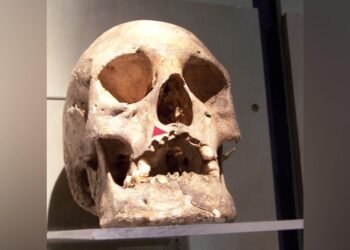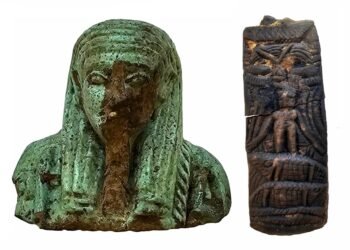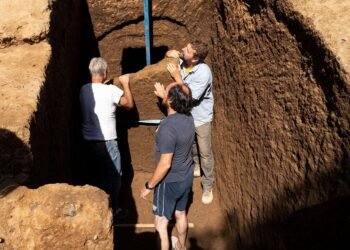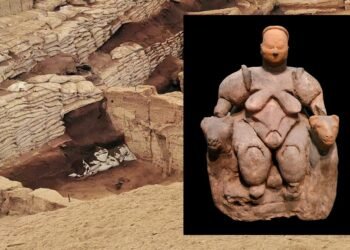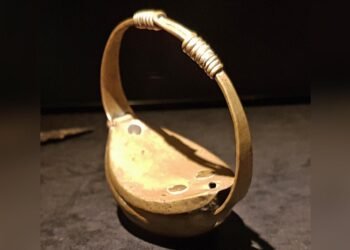Archaeologists have recently made a stunning discovery in the Wda Landscape Park (Wdecki Park Krajobrazowy) located in the Kuyavian-Pomeranian Voivodeship of Poland. This find involves a 2,000-year-old Gothic cemetery that was initially identified by Olaf Popkiewicz, an archaeologist and content creator.
Popkiewicz stumbled upon traces of the site during a preliminary study near the village of Stara Rzeka. His discovery prompted a more extensive investigation, covering an area of approximately 250 square meters within the Wda Landscape Park.
The excavations yielded a total of 50 ancient burials, dating back to the 4th century CE, a period when the Goths inhabited the region.
The Goths, a Germanic ethnic group, played a significant role in the decline of the Western Roman Empire and the emergence of medieval Europe. Referred to as Gut-þiuda (‘Gothic people’) or Gutans (‘Goths’) in their own language, the Goths had a notable presence near the lower Vistula River in Poland during the 1st century CE, particularly associated with the Wielbark culture.
The excavation efforts have unveiled a wealth of high-status grave goods, including remarkable items such as two silver necklaces, two silver fibulae (brooches), a necklace crafted from silver beads, and jewelry adorned with snake motifs. Additionally, a well-preserved urn has been uncovered among the findings.
The extent of the cemetery is believed to be much larger than the excavated area, estimated to span over 2.4 acres. Unfortunately, the deteriorating condition of a substantial portion of the site has prompted a sense of urgency among archaeologists, compelling them to expedite the excavation process in order to preserve the historical significance of the cemetery.
This newly discovered site is not the first of its kind in the region. Previous studies have revealed the existence of a Gothic settlement near the village of Osie, which demonstrated an organized arrangement of objects dating back to the 4th century CE.
The Goths had a historical presence in northern Poland during their southward migration from Scandinavia to the Roman Empire, leaving a trail of over 2,000 Gothic burials near the village of Wielbark.
The significance of the recently excavated site lies not only in its intricate grave goods and historical context but also in its portrayal of the Goths as skilled artisans. Magdalena Natuniewicz-Sekuła, a researcher at the Institute of Archeology and Ethnology of the Polish Academy of Sciences in Warsaw, highlighted that Goths living in what is now Poland during Roman times exhibited impressive skills in gold- and silversmithing. The quality of jewelry discovered in the region rivals that of pieces produced by the Roman Empire.
The urgency to salvage and preserve the cemetery’s remains is a recurring theme among archaeologists involved in the excavation. The delicate state of preservation of certain areas within the cemetery necessitates immediate action to protect the site from further degradation.




